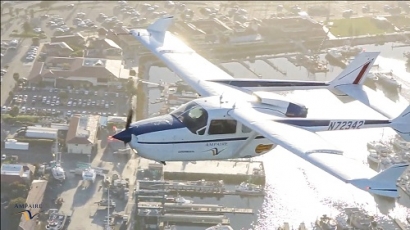
“The most practical way to achieve an all-electric future is to jump start the market with a partially-electric present,” said Co-founder and CEO Kevin Noertker. “We’re pursuing a pragmatic, step-by-step approach, a scalable plan to quickly commercialize and expand the electric airplane market. This approach recognizes that other development programs for clean-sheet all-electric aircraft will consume hundreds of millions of dollars in R&D and potentially require a decade or more to certify.”
Noertker explained that his company is currently demonstrating the ability to cut fuel consumption by 50 percent and reduce emissions accordingly. The development cost of modifying an existing aircraft is relatively low and manageable versus a clean-sheet design.
“Both Ampaire and the FAA have an opportunity to work together to develop a regulatory framework that promotes safety and creates a predictable, manageable path for certifying electric aircraft,” Noertker added.
The modified Cessna 337 is a first-step in the process, while the next may be a hybrid or fully electric retrofit of a nine- to 19-passenger commuter/cargo aircraft.
“As batteries and powertrains mature, we will shift our focus to clean-sheet designs such as our nine-passenger, zero-emissions TailwindTM concept.
“By that time, we will have established strong cash-flow from retrofit programs as well as engineering and certification expertise that will earn the confidence of investors, partners, aircraft operators, and regulators,” he concluded.

